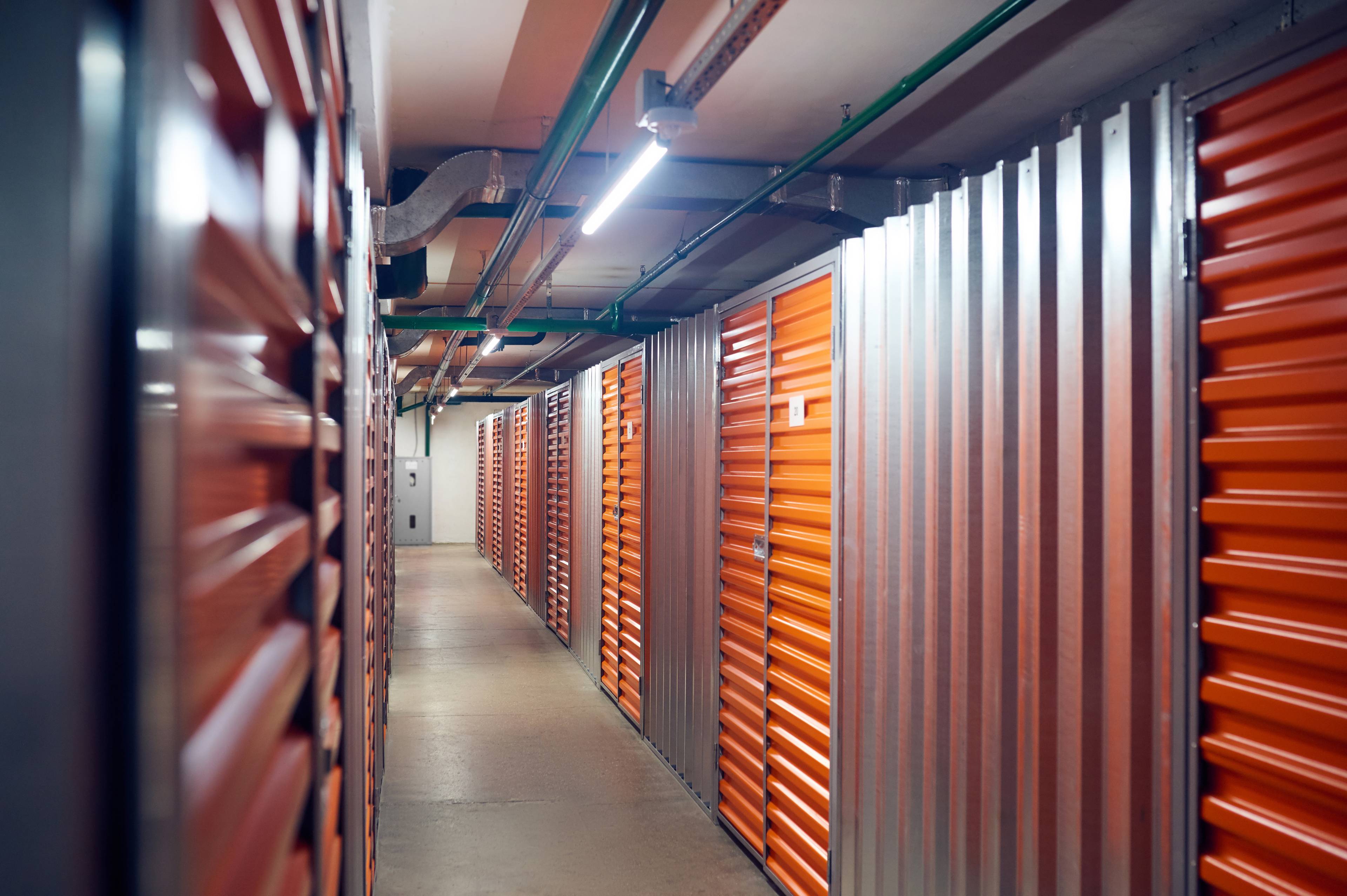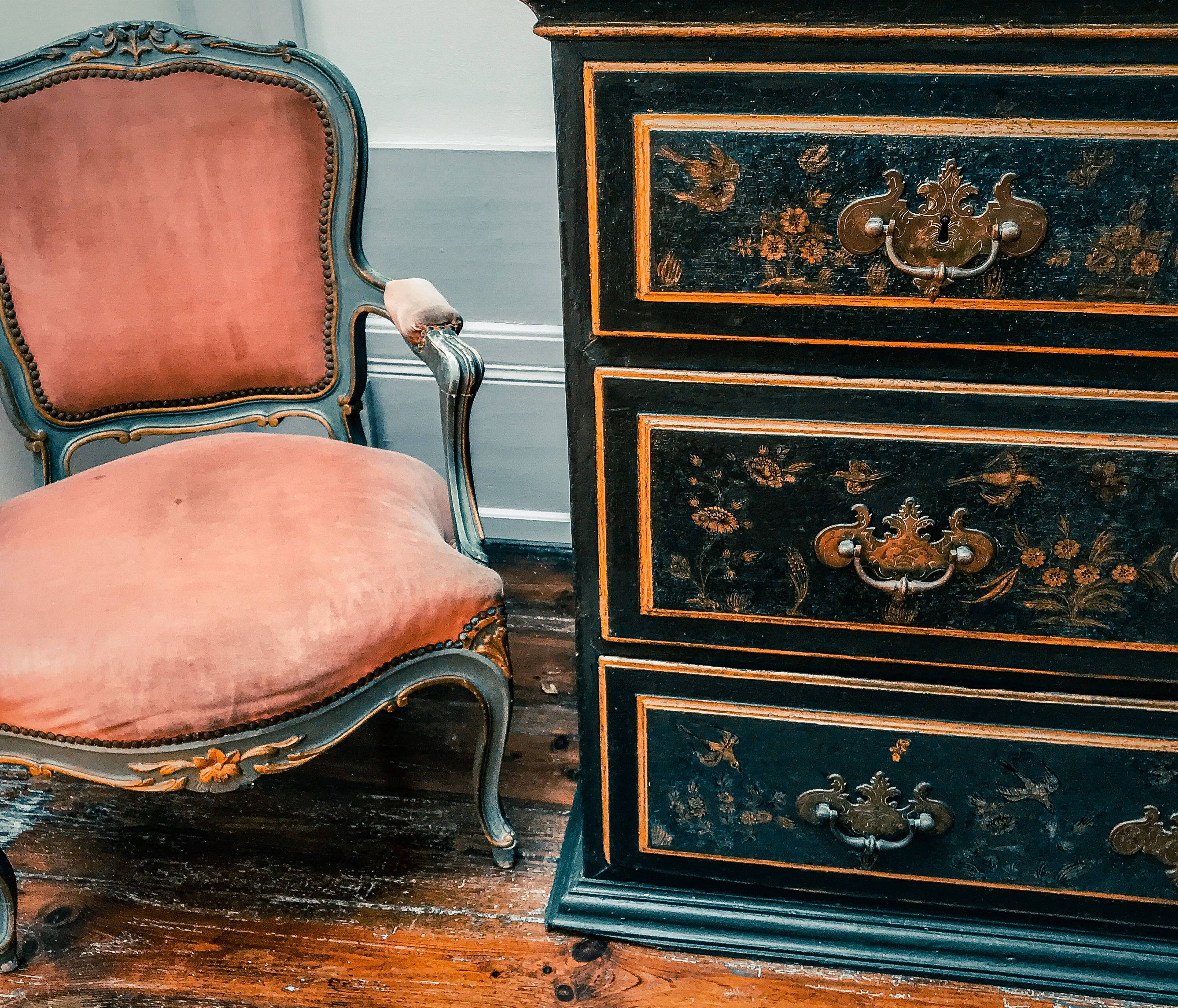Is it safe to store furniture in a storage unit?
Absolutely, it’s safe to put furniture in storage! Modern self-storage units (like those at HOLD) come with excellent security features like cameras, secure locks, and on-site staff.
Plus, climate-secure options keep your furniture safe from extreme temperatures and humidity. So, whether you’re storing a sofa or a set of dining chairs, your furniture is in good hands.
Types of furniture suitable for storage
There are little constraints on the kinds of furniture you can store in self-storage units. This includes sofas, tables, chairs, and bed frames. However, each type needs special care to keep it in good condition.
Wooden furniture – Clean and treat wooden items with wood polish to protect against drying and cracking. Wrap wood furniture in plastic wrap or dust sheets to prevent dust accumulation and use strong boxes for smaller wooden items like picture frames.
Metal furniture – Clean metal pieces to prevent rust. Applying a protective layer, such as a rust-inhibiting spray, can help keep metal furniture in good condition. Ensure items are completely dry before storing to avoid moisture damage.
Leather furniture – Use leather wipes to clean and condition the surface before storage. Wrap leather furniture in protective covers to prevent scratches and wear.
Glass tabletops – Use protective materials like bubble wrap and corner protectors to prevent breakage. Stack furniture carefully, placing glass items on top to avoid damage from heavier pieces.
Fabric upholstered furniture – Clean with a fabric or upholstery cleaner and ensure items are completely dry to prevent mildew growth. Vacuum fabric-lined items and use dust sheets or plastic wrap to cover them.
Properly preparing each type of furniture for storage ensures they remain in good condition during their time in storage units.
How do you store furniture in storage?

Preparation
Proper preparation is essential to protect furniture and keep it in top condition.
Cleaning and maintenance – Start by cleaning all furniture items thoroughly. Use a mild soap for general cleaning, leather wipes for leather furniture, and a fabric or upholstery cleaner for upholstered pieces. Make sure everything is completely dry to avoid mildew growth.
Disassembly and packing – Disassemble larger pieces like bed frames and tables to save space and make them easier to move. Keep screws and small parts in labelled bags taped to the furniture piece they belong to.
Wrapping and protection – Wrap furniture with bubble wrap, plastic wrap, or old sheets to protect against dust and scratches. A general rule is dust sheets for wooden furniture and plastic wrap for upholstered items. Protect glass items and fragile pieces with extra padding and corner protectors.
Labeling and inventory – Label each piece and keep an inventory of stored items. This will make it easier to find and unpack items when you need them.
Choosing the right storage unit

Size considerations – Ensure you choose a storage unit that has enough space to accommodate all your furniture without overcrowding. Measure your larger items and consider how much space you’ll need to move around.
Feel free to use our unit size calculator to better understand your needs.
Climate-security – For wooden, leather, and other sensitive furniture, opt for a climate-secure storage unit to prevent damage from humidity and extreme temperatures.
Accessibility and convenience – Choose a storage facility that is conveniently located and has accessible hours. This makes it easier for you to retrieve or check on your items when needed.
Security features – Look for storage units with robust security measures such as surveillance cameras, secure locks, and on-site personnel to protect your furniture from theft or damage.
Short-term vs long-term storage
Understanding the difference between long-term and short-term storage can help you better plan how to store your furniture.
Short-term storage – Ideal for temporary situations like moving, renovating, or decluttering. You might not need all the extra protective measures, but ensure your furniture is clean and covered to prevent dust and minor damage.
Long-term storage – Requires more thorough preparation to keep furniture in good condition over extended periods. When storing furniture for long term, climate-secure storage to protect against temperature and humidity fluctuations. Regularly check your stored items to ensure they remain in good condition.
Tips for long-term storage
- Clean and dry all furniture thoroughly.
- Use protective materials like bubble wrap, dust sheets, and plastic wrap.
- Avoid stacking heavy items on delicate pieces to prevent damage.
- Consider using moisture absorbers and pest deterrents in the storage unit.
Cost considerations – Short-term storage might be more affordable month-to-month, but long-term storage often offers discounts for extended stays. Factor in the cost of climate control and additional protective materials.
Common mistakes to avoid

Avoiding common mistakes when storing furniture in a storage unit can save you from damage and costly repairs.
Not properly cleaning furniture before storage – Dirt and food particles can attract pests and cause stains. Always clean and dry your furniture thoroughly before storing.
Choosing the wrong size unit – Underestimating the space you need can lead to overcrowding, which can damage your furniture.
Ignoring climate security – Wood and leather furniture, as well as other sensitive materials, can warp or crack due to extreme temperatures and humidity. Opt for climate-secure storage units to maintain stable conditions.
Poor packing and protection practices – Always make sure you pack your furniture correctly. Failing to use bubble wrap, dsust sheets, or plastic wrap can leave your furniture vulnerable to scratches, dust, and damage. Protect fragile items and glass tabletops with extra padding.
Stacking furniture incorrectly – Placing heavy items on top of delicate ones can cause breakage or deformation. Stack lighter items on top and ensure heavy pieces are stable and well-supported.
Poor packing and protection practices – Failing to use bubble wrap, dust sheets, or plastic wrap can leave your furniture vulnerable to scratches, dust, and damage. Protect fragile items and glass tabletops with extra padding.
Stacking furniture incorrectly – Placing heavy items on top of delicate ones can cause breakage or deformation. Stack lighter items on top and ensure heavy pieces are stable and well-supported.
Special considerations for antique furniture

If you own valuable antiques, any damage could decrease their value (monetary and sentimental). Preserve those antiques like the pros and make sure that doesn't happen!
Additional protective measures – Use high-quality, protective materials like thick bubble wrap, custom-fit dust sheets, and sturdy corner protectors. Avoid using old sheets or materials that can trap moisture, leading to mildew growth.
Importance of climate control – Antique furniture is particularly susceptible to damage from extreme temperatures and humidity. Opt for climate-controlled storage units to maintain a stable environment and protect these valuable pieces from warping, cracking, or mould.
Insurance options – Consider purchasing insurance specifically for your high-value or antique furniture. This provides financial protection in case of damage or loss while your items are in storage.
Regular inspections – Periodically check on your stored antique furniture to ensure it remains in good condition. This allows you to address any issues early, such as signs of mildew or pest activity.
HOLD - Flexible, affordable furniture storage
Keeping your furniture safe and sound is easy with HOLD’s storage solutions. Whether you're dealing with an overflow of items or need a secure place during a move, HOLD offers top-notch security and climate-controlled units to protect everything from wooden antiques to modern sofas.
Plus, with flexible access and excellent customer service, you'll enjoy peace of mind knowing your furniture is in good hands. Whether you're an antique dealer seeking business storage options or want to safeguard a family heirloom, we'll give your furniture the best care possible. Get a free quote from HOLD today!
Frequently Asked Questions
Will furniture go mouldy in a storage container?
Yes, if stored in a damp environment. To prevent this, use climate-controlled storage, ensure items are dry before storing, and use moisture absorbers.
Is it okay to store wood furniture in a storage unit?
Yes, it’s perfectly fine to store wood furniture in a storage unit. Just make sure to clean and dry it thoroughly, use wood polish to protect it, and opt for a climate-controlled unit to prevent warping and cracking.
Should I wrap my couch in plastic for storage?
Yes, wrapping your couch in plastic is a good idea to protect it from dust and dirt. However, ensure there is some ventilation to prevent moisture buildup, which can cause mould.
What is the best way to pack furniture in a storage unit?
Disassemble larger pieces, wrap each item in protective materials like bubble wrap or dust sheets, and stack lighter items on top of heavier ones. Label everything for easy retrieval.
How secure is my HOLD self storage unit?
Only you will have access to your unit. Upon registration, you'll receive a unique PIN code granting you access to the site. Additionally, you'll secure your unit with your own padlock. If you need others to access your unit, they can do so with your permission and using your code.
When can I access my HOLD storage unit?
We offer 24/7 access hours and round-the-clock customer assistance. These crucial features are included in all our storage solutions at HOLD. If your business operates outside traditional business hours, it allows for late-night or early-morning inventory management.


